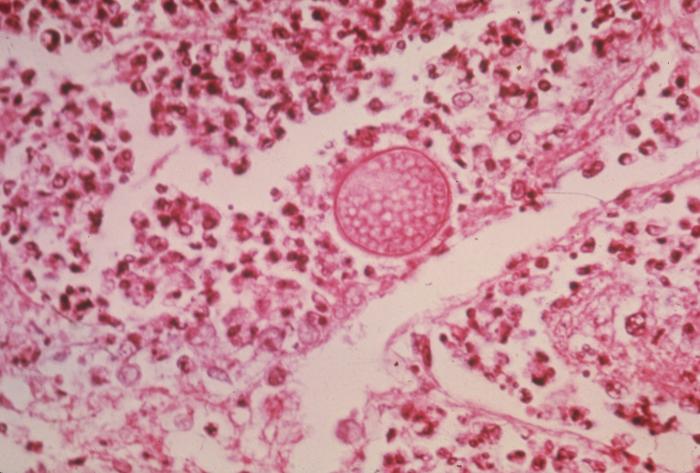Mets first baseman Ike Davis caught Valley Fever in Arizona two years ago during the offseason, and he hasn’t been the same player since, though that may have more to do with a long swing than a lung illness. But those in the West who don’t have to worry about hitting a slider are also catching the fungal disease, in increasingly scary numbers, and the sinister spores have compromised not just their job performances but their very lives. From “Death Dust,” an article by Dana Goodyear in the New Yorker, a description of a disease aided in its spread by real-estate development and changes in demographics:
“Cocci is endemic to the desert Southwest—California, Arizona, New Mexico, Nevada, Texas—and to the semi-arid parts of Central and South America. Digging—building, drilling, tilling, clearing—stirs it up, and dry, hot, windy conditions, a regional feature intensified by climate change, disperse it. In recent years, infections have risen dramatically. According to the Centers for Disease Control, from 1998 to 2011 there was a tenfold increase in reported cases; officials there call it a ‘silent epidemic,’ far more destructive than had been previously recognized. Its circumscribed range has made it easy for policymakers to ignore. Though it sickens many times more people than West Nile virus, which affects much of the country, including the Northeast, it has received only a small fraction of the funding for research. ‘The impact of valley fever on its endemic populations is equal to the impact of polio or chicken pox before the vaccines,’ John Galgiani, an infectious-disease physician who directs the Valley Fever Center for Excellence, at the University of Arizona in Tucson, says. ‘But chicken pox and polio were worldwide.’
In 2012, valley fever was the second-most-reported disease in Arizona; two-thirds of the country’s cases occur in the state. There is no vaccine to protect against it and, in the most severe cases, no cure. The population of Phoenix has grown by ten per cent in the past decade, and newcomers have no acquired immunity. The elderly and the immune-compromised—including pregnant women—are most susceptible; for unknown reasons, otherwise healthy African-Americans and Filipinos are disproportionately vulnerable to severe and life-threatening forms of the disease. (In one early study, Filipino men were estimated to be a hundred and seventy-five times as likely as white men to get sick from cocci, and a hundred and ninety-two times as likely to die from it.) But, as one specialist told me, ‘if you breathe and you’re warm-blooded, you can get this.'”

